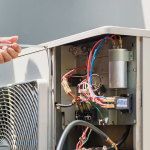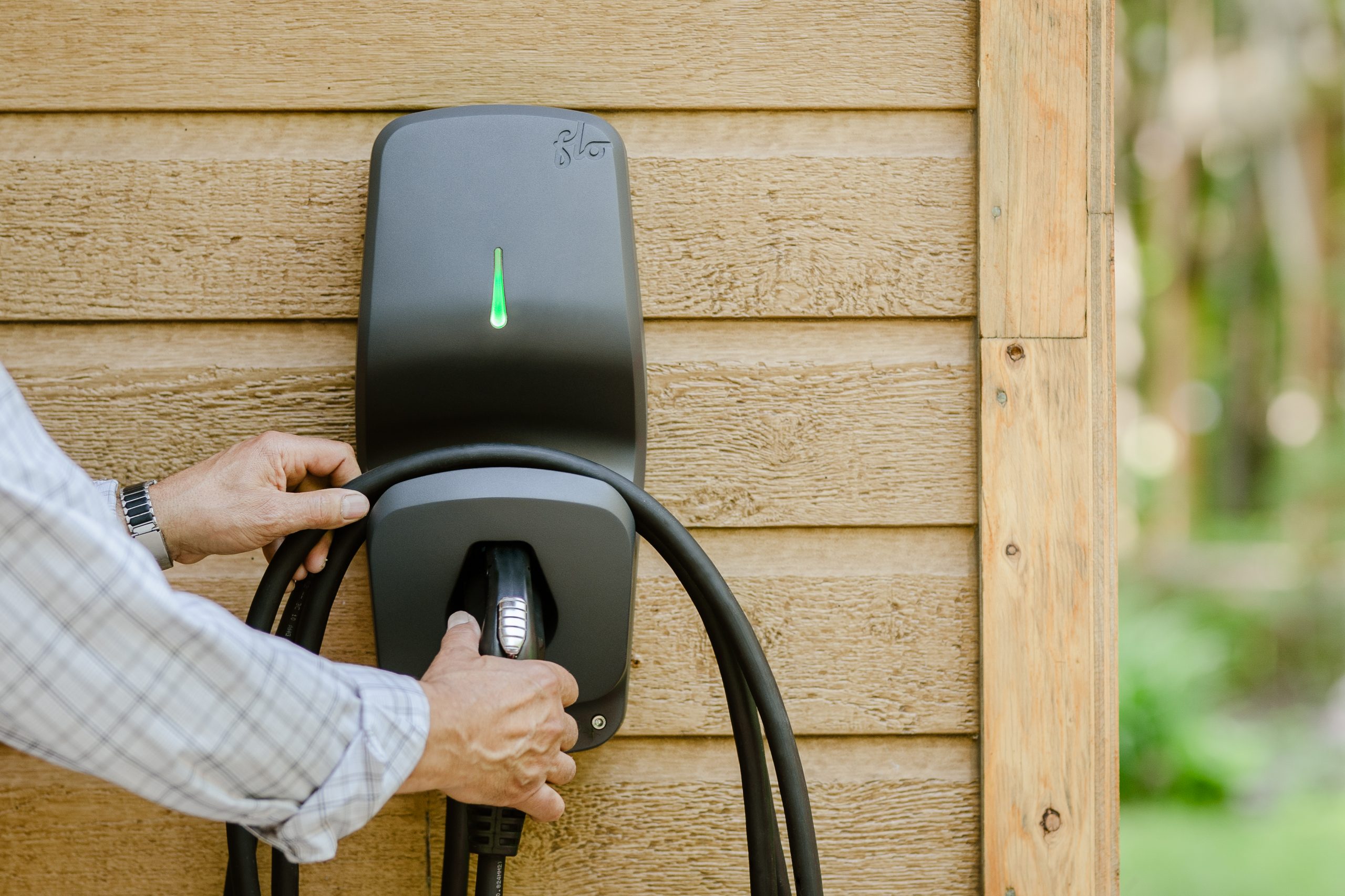The Ultimate HVAC Guide for Commercial Spaces: FAQs of Business Owners14 min read
Reading Time: 11 minutesHVAC Guide for Commercial Spaces: We Answer Common Questions!
From the depths of winter to the high heat of summer, Canadian business owners and property managers must be able to rely on their HVAC systems. Aside from keeping staff and customers comfortable year-round, a faulty, improperly-serviced, and/or aging HVAC system can create major headaches — from unplanned downtime due to maintenance, inconsistent heating/cooling, and inefficiencies that can inflate energy bills.
And yet, despite how important these systems are, they remain a mystery to many business owners. So to help you better understand how your HVAC system works, we’ve put together this HVAC guide for commercial spaces.
NEED A NEW HVAC SYSTEM? CONTACT RELIANCE COMMERCIAL SOLUTIONS
BROWSE THIS CONTENT:
1. What is an HVAC System & How Does It Work?
2. What Are The Different Components of an HVAC System?
Component #1: The Air Conditioner
3. What Type of Commercial HVAC System is Right for My Business?
HVAC Systems That Require Ductwork
HVAC Systems That Do Not Require Ductwork
4.Is My HVAC System Broken? Addressing Common HVAC Problems
5. 3 Things to Consider When Assessing Your Commercial HVAC Needs
6. Should I Buy or Rent an HVAC Unit?

To start, what is an HVAC system and how does it work in commercial spaces?
HVAC stands for Heating, Ventilating and Air Conditioning. These interconnected systems provide heating, cooling and ventilation to various spaces within a store, hotel, office building, healthcare facility, restaurant, etc.
HVAC systems can help commercial facilities control their internal environment with precision when they are properly installed and maintained.
What are the Different Components of an HVAC System?
Let’s dig into the key components of an HVAC system to understand how they help with environmental control. While each of these components is essentially their own system, they come together to form an HVAC unit that can be used in a commercial space.
COMPONENT #1: THE AIR CONDITIONER
Air conditioning units draw indoor air, cool that warmer air through a special process, return the cooled air into the indoor space, and release the heat that was initially drawn from the space into the outdoors. This process repeats on a cycle until the indoor space reaches the desired temperature.
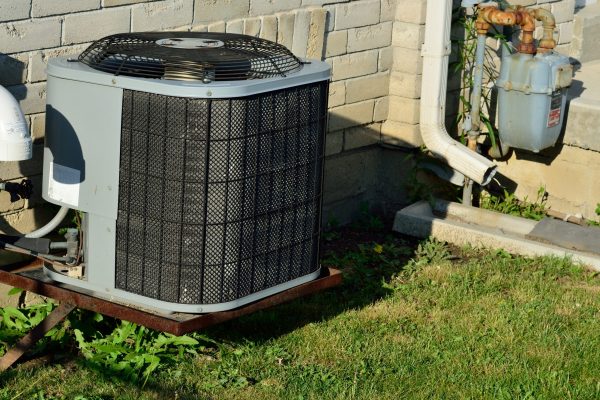
Key Air Conditioner Parts and Process:
1. The Thermostat: The control system that turns the air conditioner on and off and sets the desired temperature
2. The Blower: The component that both draws warm air into the system to be cooled and circulates the air back into the space once it has been cooled.
3. The Evaporator Coil: Once the blower has drawn warm air into the system, it passes over the evaporator coil which pulls the heat out of the air using refrigerant.
4. Refrigerant: A chemical compound that absorbs, transfers and releases heat as it transitions from a liquid to a gas and back again. It is the key substance that makes refrigeration possible.
5. The Compressor: After absorbing the heat, the warm refrigerant passes into the compressor where it is compressed into a much denser, hotter substance.
6. The Condensing Coil: The condensing coils then release the collected heat to the outside before the now-cooled refrigerant circulates back inside to collect more heat.
7. The Condenser Fan: This fan aids in the process of drawing heat from the condensing coil and pushing it outside.
8. The Duct Work: The interconnected system of ducts that distributes conditioned air around the commercial space.
COMPONENT #2: THE FURNACE
The furnace provides heat to a commercial building. At the simplest level, the heating process consists of three parts: the thermostat signals the furnace to turn on, the burners ignite and deliver heat to the heat exchanger, and blowers move air over the heat exchanger into ducts that distribute heat around a space.
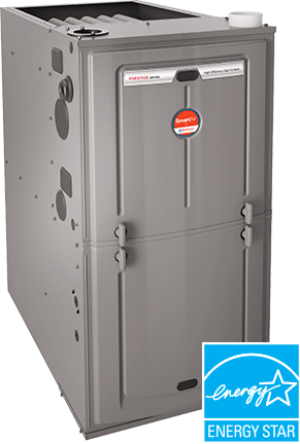
Key Furnace Parts and Process:
1. The Thermostat: The control system that turns the furnace on and off and sets the desired temperature
2. Natural Gas: The fuel source for the burners. The gas used by the furnace to create heat is controlled by a valve that regulates the flow and pressure.
3. The Burners: Where the air and gas are mixed and burned to create heat
4. The Heat Exchanger: A collection of tubing and fins, the heat exchanger pulls the heat from the exhaust gas and uses it to heat the air inside the building.
5. The Blower Motors: Once the heat exchanger is sufficiently heated, the blower motors circulate air over the heat exchanger to warm it up before it enters the ductwork.
6. The Duct Work: The interconnected system of ducts that allow heated air to pass throughout the commercial space to its intended destination. The treated air is released from ductwork through exit points called registers.
COMPONENT #3: VENTILATION
Ventilation is a crucial component of an HVAC system. This is especially true in public settings like health care facilities, gyms, restaurants, and large office buildings, where indoor air quality is very important. To learn more about the importance of indoor air quality, click here.
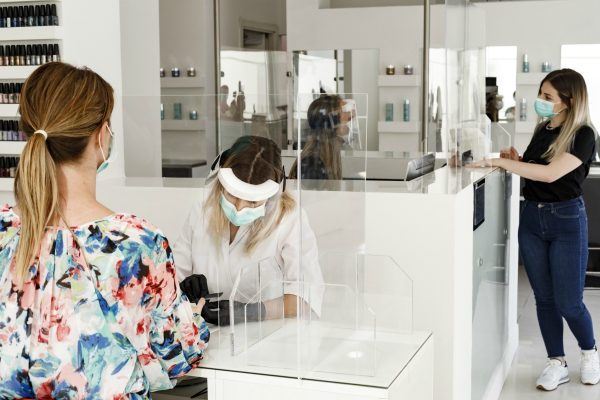
Different Types of Ventilation Systems:
1. Natural ventilation: As simple as opening doors and windows for a cross-breeze. While intentional natural ventilation can be effective, it won’t deliver comfortable or consistent results year-round.
2. Exhaust Systems: Consisting of strategically-placed fans and vents, these systems work by depressurization: exhaust fans reduce indoor air pressure, drawing stale air out of a space while fresh, outdoor air makes its way indoors via passive vents.
3. Supply Systems: Whereas exhaust systems mechanically pull air out of a space, supply systems mechanically force fresh air into a space. However, like exhaust systems, supply systems are less energy efficient than other mechanical forms of ventilation. Why? Because both systems focus on replacing conditioned air (in other words, air you have paid to heat or cool) with unconditioned air.
4. Energy-Recovery Ventilators (ERV): A more balanced, energy-efficient method of ventilation, especially during hot, humid summers. Not only do ERV systems bring in fresh outdoor air, they take the added step of removing the heat and humidity before the air is distributed in the space during the summer. In the winter they use the exhausted air to heat and increase the humidity of the incoming fresh air.
5. Heat-Recovery Ventilators (HRV): HRV units are a more efficient way of supplying clean, fresh air in both the winter and the summer months. In the winter, these units vent stale indoor air while also heating the incoming supply of cold, fresh air. HRVs will also cool incoming hot outside air in the summer months. Like ERVs, these systems relieve some of the pressure placed on furnaces and air conditioning units at different points in the year.
Systems That Can Work With Your HVAC System to Improve Indoor Air Quality
1. High-Efficiency Particulate Air (HEPA) Filters: HEPA filtration systems are very effective at filtering out and trapping airborne particulates that travel through a heating and cooling system. They remove about 99.97% of particles down to 0.3 microns from the air.
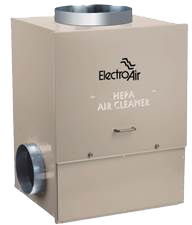
2. Electronic Air Filters: Electronic air cleaners, such as electrostatic air filters, generate charged particles that trap or attach to pollutants in order to remove them from the air. These air filters work with your existing HVAC or can be added to a new heating and cooling system.
3. Ultraviolet Light Systems mount right inside the air duct of your HVAC system. UV technology attacks microorganisms stuck on walls within sight of the light on a molecular level and alters the chemical composition or otherwise damages the genetic material inside select bacteria, viruses and mold. This can inactivate or kill them.
What Type of Commercial HVAC System is Right for My Business?
From dental offices and small retail stores to multi-complex properties and restaurants, commercial buildings come in different shapes and sizes. With so much variety, it’s important to work out which types of HVAC systems will work best for you and your business.

HVAC SYSTEMS THAT REQUIRE DUCTWORK
Split System Central Air HVAC Units
Ideal for coffee shops, small medical clinics, hair salons, etc.
These central air units are split between the indoors and the outdoors. Whereas the indoor unit holds the furnace and the evaporator for the air conditioner, the outdoor unit holds the air conditioning condenser components. These smaller, cost-effective units are controlled by a single thermostat, and may contain an IAQ component (such as an HRV or air filtration product) and are ideal for use in smaller commercial applications to control room temperature.
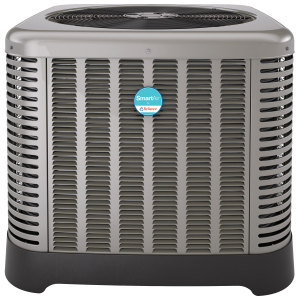
Multi-Split System HVAC Units
Ideal for restaurants, small offices etc.
These units are configured in the same way as single-split system units. However, they will connect multiple indoor units to a single outdoor unit. Not only can this make these units more efficient, but it can also considerably reduce the outdoor footprint. These systems are ideal for medium-sized commercial spaces.
Packaged Rooftop HVAC Systems
Used in large retail, commercial and industrial applications
In contrast to split systems, packaged rooftop HVAC systems contain all the various components of the heating and cooling systems in one singular unit. After air is pulled into the system, it is either heated using heat exchangers or cooled using refrigerant and cooling coils. It is then distributed around the commercial space through the use of fans and ductwork.
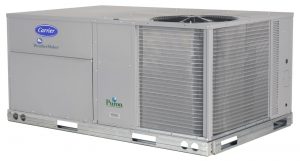
VRF HVAC Units
Ideal for large retail stores, office buildings, multi-complex residential properties, hotels, etc.
Variable Refrigerant Flow (VRF) units are the go-to choice for large commercial applications. VRF units are essential for commercial spaces where sophisticated zonal temperature control is needed. There are two types of VRF air conditioning systems:
1. Heat Pump VRF: Can either heat or cool a building at any given time. Good for when a single temperature is desired for a large space.
2. Heat Recovery VRF: Allows different building occupants in different spaces to heat or cool the space they are in simultaneously. As the name suggests, these heat recovery systems can use the heat drawn from one room to heat another space in the same building. In some cases, the heated and cooled refrigerant in these systems is also used to heat or chill water.
HVAC SYSTEMS THAT DO NOT RQUIRE DUCTWORK
Air Source Heat Pump Split
Good for small commercial spaces that lack ductwork
An air source heat pump split is a compact, modern, refrigerant-based heating and cooling system. It consists of an outdoor unit and one or more indoor units, sometimes called heads. Whereas the outdoor unit looks similar to a conventional air conditioning unit, the indoor units are mounted in the ceiling, on the wall, or near the floor like baseboard heaters. For smaller commercial spaces, these units can provide all-season comfort and are a highly efficient option.
Boilers
A boiler, or a hydronic heating system, provides heating by using a fuel source to heat a fluid (such as water or glycol) that is pumped through a hydronic heating system to various devices such as radiators or in-floor heating loops. Boiler heat does not require ductwork and is often found in older spaces.
Is My HVAC System Broken? Addressing Common HVAC Problems
To Start, Routine Maintenance is Key
Business owners and property managers need to be able count on their HVAC units. From energy costs and efficiency to creating a comfortable environment for guests, customers, patrons and employees, these systems just have to work.
Adhering to a routine preventative maintenance program overseen by HVAC experts is the best way to ensure the long life of your unit. A detailed multi-point inspection is especially important at the start of a new season when heavy use is inevitable.
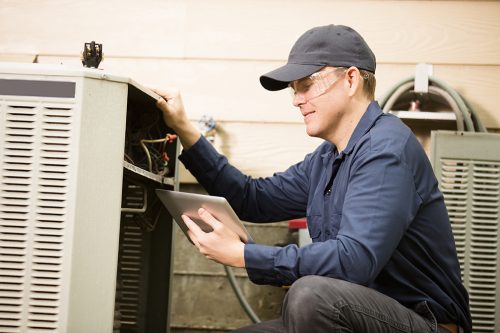
Excessive Noise
If you hear unusual banging, clanging, buzzing or high-pitched sounds, this could point to loose parts, broken parts, debris and other issues. Shut the unit down and call a technician right away.
Refrigerant Leaks
The performance and efficiency of an air conditioning unit greatly depend on maintaining proper refrigerant levels. If refrigerant levels are inadequate, or if there are leaks, your air conditioning system may no longer cool your building.
Ignition Problems
Factors like wear and tear, gas supply problems, and/or a faulty ignitor can all prevent your furnace from igniting properly. Routine HVAC maintenance by a trained technician is key to keeping these components of your unit working properly.
Clogged and Dirty Filters
We didn’t mention them earlier, but filters play an essential step in keeping your HVAC system running cleanly and efficiently. Commercial business owners should regularly have their filters inspected and replaced to ensure that they are not clogged with dust, dirt and debris. If left unattended, a clogged filter can restrict airflow and cause numerous problems in the unit.

NEED A NEW HVAC SYSTEM? CONTACT RELIANCE COMMERCIAL SOLUTIONS
3 Things to Consider When Assessing Your Commercial HVAC Needs
Unit Size
When it comes to HVAC equipment for commercial spaces, size is everything. Too large, and your HVAC unit may not perform efficiently and may consume far too much energy; too small, and your unit may not be able to meet the demands of your business needs.
Energy Efficiency
It is important to look at the Seasonal Energy Efficiency Ratio (SEER). This is the measure of a cooling system’s efficiency over the course of a season of use. An ENERGY STAR® certified air conditioner will provide greater energy efficiency than base models, as it requires a minimum SEER of 14.5 or higher to qualify for certification.
Switching to Smart Thermostat like Google’s Nest Learning Thermostat may also help business owners keep their energy costs in check. However, these should be set up by trained technicians to help you get the most out of the features.
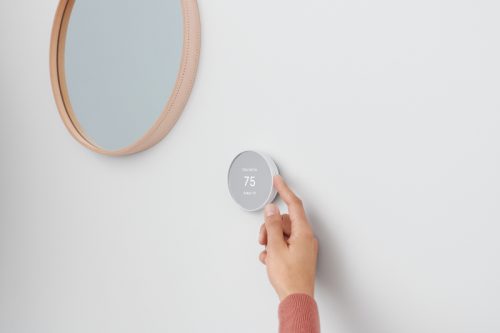
Installation and Servicing
A reputable HVAC contractor is an important part of your investment. As with any major service, ask for referrals and get firm quotes from various HVAC contractors.
Should I Buy or Rent an HVAC Unit?
Investing in an HVAC system for your business will involve upfront costs and you will be responsible for the cost of maintenance and repairs. On the other hand, renting from Reliance Commercial SolutionsTM means you can take advantage of an HVAC rental plan, which offers free standard installation*. You’ll receive one predictable monthly bill that covers the costs of the maintenance, service and repairs*. Plus, Reliance customers can take advantage of:
● Guaranteed 4-Hour Service Call Response Time*: In the event of a breakdown, our priority is to get you back in business as soon as possible.
● No Upfront Capital Outlays: Most replacements won’t cost you a cent upfront, allowing you to hold onto more capital.
● One Number to Call: We pride ourselves on offering the easiest, most convenient and accessible service in the industry.
● No Extra Repair Costs: Ongoing service and repair costs (including parts and labour) are included in your monthly payment.
● Qualified Team of Experts: We work with hundreds of licensed technicians to provide the service you need when you need it.
You can also rest easy knowing your equipment is backed by an industry leader that has delivered excellent service and results for over 60 years.
Interested in HVAC rental, but not new equipment? Consider the Reliance Buyback Program
Exclusive to Reliance Commercial Solutions, the Buyback Program is a way for business owners who currently own their HVAC system to have Reliance purchase and maintain their equipment. They can then reinvest this capital wherever they see fit. After the buyback is complete, you rent your equipment from us and take advantage of the Reliance Rental Program. This program presents an opportunity for you to enter into a far more convenient and stress-free arrangement when it comes to your mechanical equipment.
LEARN MORE ABOUT THE BUYBACK PROGRAM
To learn more about HVAC systems for your business and the numerous benefits that come with our rental plans, get in touch with a Reliance representative today!
Learn More About HVAC On Our Blog!
1. A Commercial Air Conditioning Guide for Business Owners & Managers
2. How a Commercial Air Purifier Can Improve Indoor Air Quality
*Rental and protection plan benefits including service response time, included repair and replacement costs and buyback are subject to rental program terms and conditions. Standard installation at no charge. Some additional charges may apply in certain cases (e.g. code-required venting).

